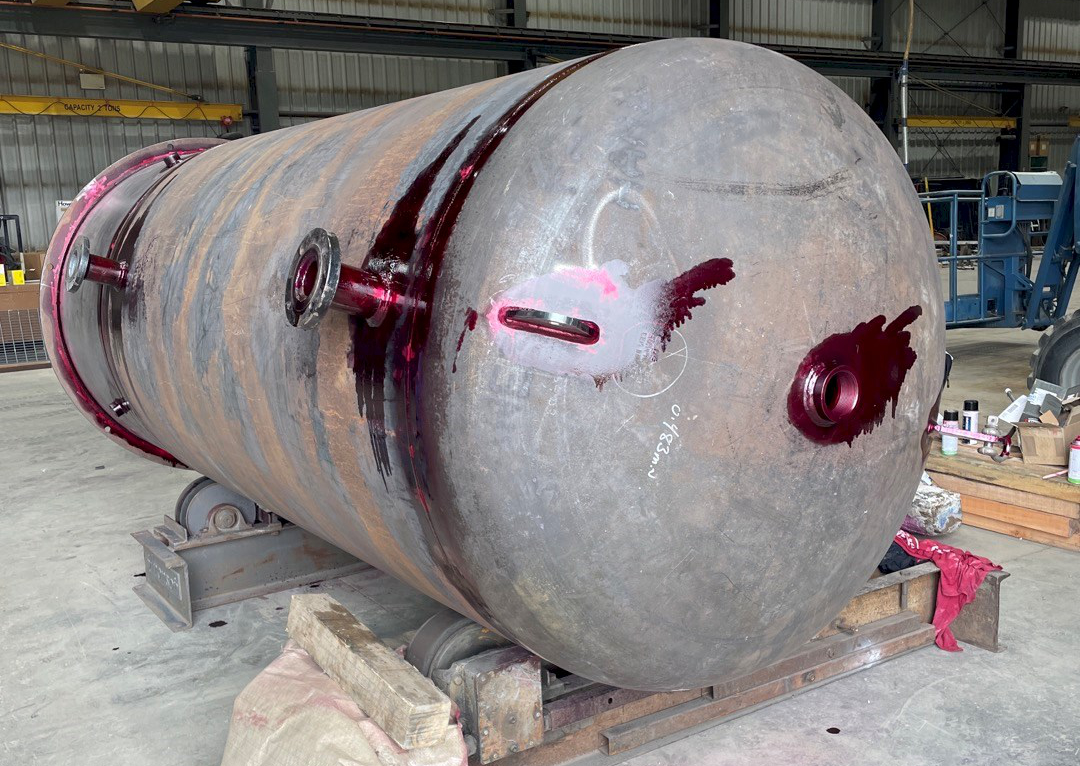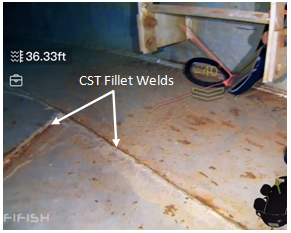Advanced Techniques in Modern Tank Welding Inspection
Advanced Techniques in Modern Tank Welding Inspection
Blog Article
A Comprehensive Introduction of Container Welding Evaluation Specifications and Methodologies for Improved Weld High Quality and Efficiency
The value of welding examination criteria in the production of containers can not be overemphasized, as they act as the foundation for guaranteeing weld integrity and functional dependability. Various assessment methods, consisting of visual evaluations and progressed non-destructive testing methods, are crucial in determining possible defects that might jeopardize efficiency. Sticking to governing criteria not only enhances weld high quality however additionally reduces the threat of expensive failures. As we discover the subtleties of these approaches, it comes to be essential to think about exactly how a systematic technique can reinvent existing techniques and result in substantial improvements in results.
Significance of Welding Evaluation Requirements

Welding evaluation criteria include a series of criteria, consisting of material specs, welding procedures, and credentials of workers associated with the welding procedure. By enforcing these requirements, companies can methodically identify and fix prospective flaws, consequently decreasing the chance of expensive repair work or devastating failings. Additionally, rigorous inspection techniques foster a society of liability and precision, urging welders to preserve high levels of workmanship.

Usual Welding Assessment Techniques


Ultrasonic Checking (UT) is an additional prevalent strategy, making use of high-frequency sound waves to spot internal defects that may not be noticeable externally. This method is specifically effective for identifying gaps or inclusions within the weld metal. Magnetic Bit Testing (MT) is also commonly made use of, especially for ferromagnetic materials, as it reveals surface and near-surface flaws through the application of magnetic areas and ferrous bits.
In Addition, Liquid Penetrant Testing (PT) detects surface-breaking flaws by using a penetrant to the weld and afterwards making use of a programmer to extract the penetrant. Each of these techniques adds to a detailed evaluation approach, ensuring that welds satisfy the strict quality standards needed in storage tank building and construction.
Regulatory Standards and Compliance
Regulatory requirements and conformity are vital elements in making certain the security and reliability of welded frameworks in tank building - Tank Welding Inspection. These requirements serve to develop minimum needs for product buildings, welding procedures, and assessment techniques, thereby reducing the risk of architectural failures and improving overall efficiency
Secret organizations, such as the American Culture of Mechanical Engineers (ASME) and the American Welding Society (AWS), give guidelines that are commonly embraced in the sector. Compliance with these criteria not only makes sure adherence to ideal methods however additionally meets lawful and legal responsibilities, guarding the passions of stakeholders.
Regulatory bodies often mandate adherence to certain codes, such as ASME Code Area IX for welding credentials and API 650 for bonded containers. These codes lay out requirements for welding techniques, certifications of workers, and testing techniques to confirm weld honesty.
Regular audits and evaluations are essential to keeping compliance, as they aid determine inconsistencies from developed criteria. Non-compliance can cause substantial penalties, task delays, and safety hazards. Hence, a durable understanding of regulative criteria and a dedication to compliance are extremely important in attaining premium and long lasting welded container structures.
Non-Destructive Examining Methods
How can the integrity of welded structures be ensured without triggering damages? Non-destructive testing (NDT) methods use a durable service, making it possible for examiners to assess weld quality without endangering the material - Tank Welding Inspection. Amongst the most usual NDT methods are ultrasonic screening (UT), radiographic testing (RT), magnetic bit testing (MT), and dye penetrant testing (PT)
Radiographic screening entails passing X-rays or gamma rays via the weld, developing photos that expose architectural problems such as splits or voids. This technique is important for analyzing the stability of complex welds.
Magnetic particle testing is matched for ferromagnetic products, where magnetic fields expose surface and near-surface discontinuities. Color penetrant testing uses a liquid dye to highlight surface-breaking problems, making it a reliable approach for non-porous products.
Each of these NDT approaches has unique advantages, allowing for thorough analyses tailored to specific products and welding processes. By carrying out these strategies, sectors can ensure the integrity and security of welded frameworks, eventually boosting general performance.
Enhancing Weld Top Quality Via Inspection
Reliable assessment plays a vital function in boosting weld top quality, serving as a check my blog vital checkpoint in the manufacture process. By recognizing prospective flaws early, inspections reduce the threat of jeopardized structural honesty and make certain conformity with sector standards. Using a mix of aesthetic exams, non-destructive screening (NDT) methods, and mechanical assessments, assessors can identify concerns such as porosity, cracks, and incomplete blend.
Implementing a durable examination method not just boosts the general top quality of welds yet also fosters a society of accountability among welders and producers. Routine training and certification of inspection personnel make sure that they are outfitted with the essential skills to recognize and address prospective troubles properly. This aggressive technique reduces rework and associated prices, eventually adding to predict effectiveness.
Furthermore, thorough documents of evaluation findings gives useful insights right into persisting issues, facilitating continual improvement in welding techniques. By leveraging advanced innovations, such as automated ultrasonic testing or electronic radiography, weld quality can Read Full Article be enhanced via much more precise examinations. In final thought, a strenuous assessment process is vital in accomplishing high-quality welds, making sure safety, dependability, and longevity in container fabrication.
Final Thought
Finally, the implementation of rigorous container welding evaluation criteria and methodologies is necessary for ensuring weld stability and efficiency. By utilizing a combination of visual assessments, non-destructive screening methods, and adherence to regulatory requirements, organizations can properly recognize and reduce possible defects. Fostering a culture of responsibility amongst welders further enhances the quality of welding processes. Inevitably, these techniques contribute to reduced structural failures, lower repair service prices, and improved operational effectiveness read the article within the market.
Report this page